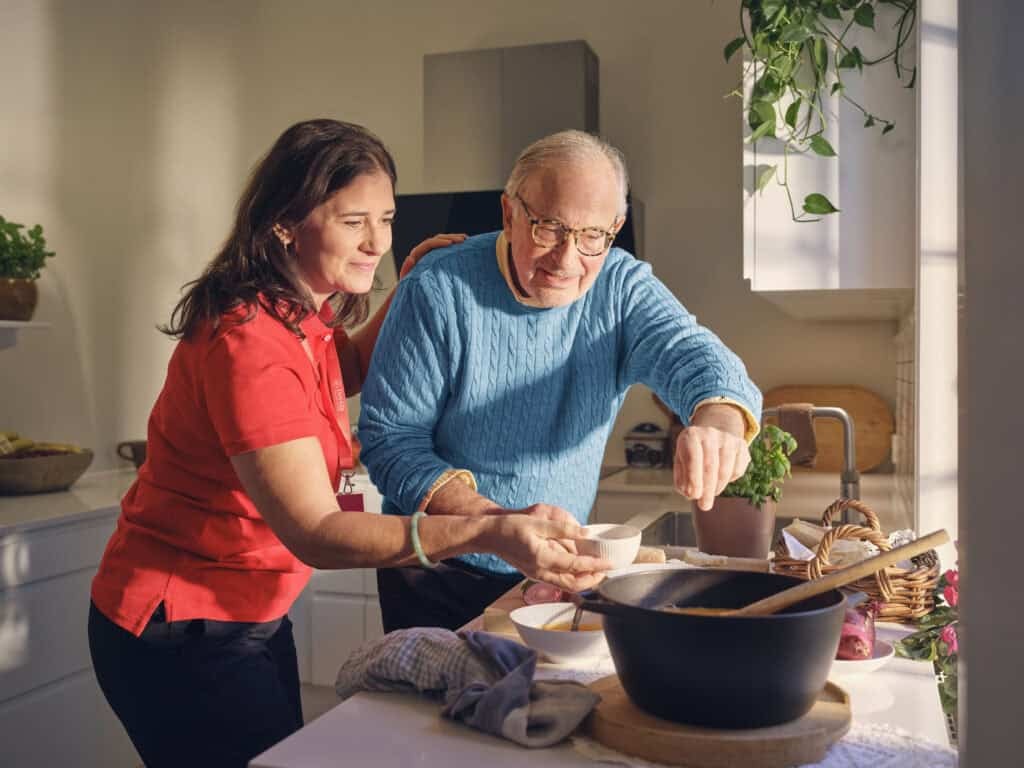Blog
13 June 2025
Creating a Safer Home: Essential Fall Prevention Strategies
Nearly 90% of Australians want to remain in their own homes as they age, and with thoughtful planning and simple modifications, this goal is absolutely achievable. At Dovida, empowering you to live safely and independently at home can start with just a few purposeful adjustments.
Falls are one of the leading causes of injury among older adults, but the good news is that most falls are preventable through environmental modifications and increased awareness of potential hazards.
Foundation Safety: Furniture and Lighting
Start with the basics – ensure all furniture is steady, comfortable, and easy to navigate around. Many falls occur when getting out of chairs or beds due to dizziness or moving too quickly. Take time to sit on the edge of your bed for a few minutes before standing to allow your body to adjust.
Adequate lighting is crucial, particularly at night. Create a well-lit pathway from your bedroom to the bathroom using night lights, motion-activated lighting, or rope lighting. Consider installing multi-way light switches that allow you to turn lights on when entering a room and off when leaving through another door. Touch-lamps beside your bed provide easy access to lighting without fumbling for switches.
Eliminating Trip Hazards
Decluttering is one of the most effective fall prevention strategies. Keep all rooms tidy and immediately pick up items from the floor, especially if you use mobility aids. Frayed or loose rugs are among the most common causes of falls – either remove them entirely or secure them with double-sided non-slip backing.
Pay attention to electrical cords and cables. Tape extension cords away from walkways and avoid running cables across rooms where they can become trip hazards. Consider replacing traditional door handles with lever-style handles, which are easier to grasp and operate.
Room-by-Room Safety
Kitchen Safety: Many serious accidents involving older adults occur in the kitchen. Use lighter kettles and only boil water for immediate needs. Keep pot handles turned away from the front of the cooker and use rear hot plates when possible. Store heavy items at waist level and sharp objects securely. Wipe up spills immediately to prevent slipping hazards.
Bathroom Modifications: Install slip-resistant grab rails near the shower, bath, and toilet, and use non-slip bath mats for additional grip. Consider a thermostatic mixing valve to maintain safe water temperatures, and always run cold water first when filling a bath. An adjustable shower head and shower seat can provide safer bathing options.
Stair Safety: If you have stairs, always use handrails and ensure the area around any stair lifts is clear. Keep steps well-lit and free from clutter.
Outdoor Considerations
Maintain pathways by keeping them free from moss, algae, and fallen leaves. Install sensor lighting at entrances for both safety and security. In cold weather, use salt or sand on steps for better traction, and avoid using ladders without assistance.
Professional Guidance
Consider consulting an Occupational Therapist for personalised recommendations about equipment and modifications specific to your needs and home layout.
Remember, these modifications aren’t just about preventing falls – they’re about maintaining your independence and confidence in your own home for years to come.

